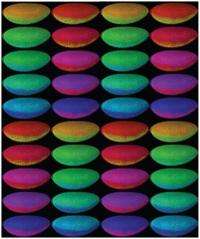Study suggests that successful blueprints are recycled by evolution

During the development of an embryo, a large number of different, specialised cell-types arise from the fertilised egg. The genetic information is identical in all cells of an organism. Different properties of cells arise because the activity of genes is controlled and regulated by so called transcription factors. By switching genes on or off, the body makes muscle cells, bone cells, liver cells and many more.
Scientists have been puzzling over the question whether the gene regulatory programs that control this development have been "invented" only once during evolution or whether they might have arisen anew in different species. Previous studies supported both theories to a certain extent.
A team of researchers in Austria and the United States has now looked at key regulatory proteins in six different species of the fruit fly Drosophila. They studied the development of the mesoderm, one of the three primary germ cell layers in the early embryo of all higher organisms. Mesodermal cells differentiate into muscle cells, heart cells, connecting tissue and bone, among others.
Evolution with a Twist
"Some of the fly species that we looked at are as closely related as humans are to other primates. Others are as distant as humans and birds", explains Alexander Stark, a systems biologist at the Research Institute of Molecular Pathology (IMP) in Vienna and one of the authors of the study. The team focussed on the transcription factor Twist and looked at the binding sites for Twist on the DNA of the different species. It turned out that these binding sites are very similar in all the flies, suggesting that the program that regulates mesodermal development has been "recycled" rather than invented independently in these animals.
In addition to these results, the study also found that Twist interacts with partner transcription factors to specifically bind to DNA at the correct positions. A deeper understanding of these mechanisms will help understand how higher organisms such as humans develop and how flaws in the regulation of genes may lead to diseases such as cancer.
A network of collaborations
The study is the result of a fruitful cooperation between two former MIT-colleagues: Julia Zeitlinger, who is now at the Stowers Institute for Medical Research and the University of Kansas School of Medicine, identified the binding sites of transcription factors. Alexander Stark, who is now a Group Leader at the IMP and head of a sub-project of the Bioinformatics Integration Network III, was in charge of prediction and analysis of the data.
More information: The Paper "High conservation of transcription factor binding and evidence for combinatorial regulation across six Drosophila species" is published in the May 2011 issue of Nature Genetics, Vol. 43/5, pp 414 - 420. doi:10.1038/ng.808
Abstract
The binding of some transcription factors has been shown to diverge substantially between closely related species. Here we show that the binding of the developmental transcription factor Twist is highly conserved across six Drosophila species, revealing strong functional constraints at its enhancers. Conserved binding correlates with sequence motifs for Twist and its partners, permitting the de novo discovery of their combinatorial binding. It also includes over 10,000 low-occupancy sites near the detection limit, which tend to mark enhancers of later developmental stages. These results suggest that developmental enhancers can be highly evolutionarily constrained, presumably because of their complex combinatorial nature.
Provided by Research Institute of Molecular Pathology


















